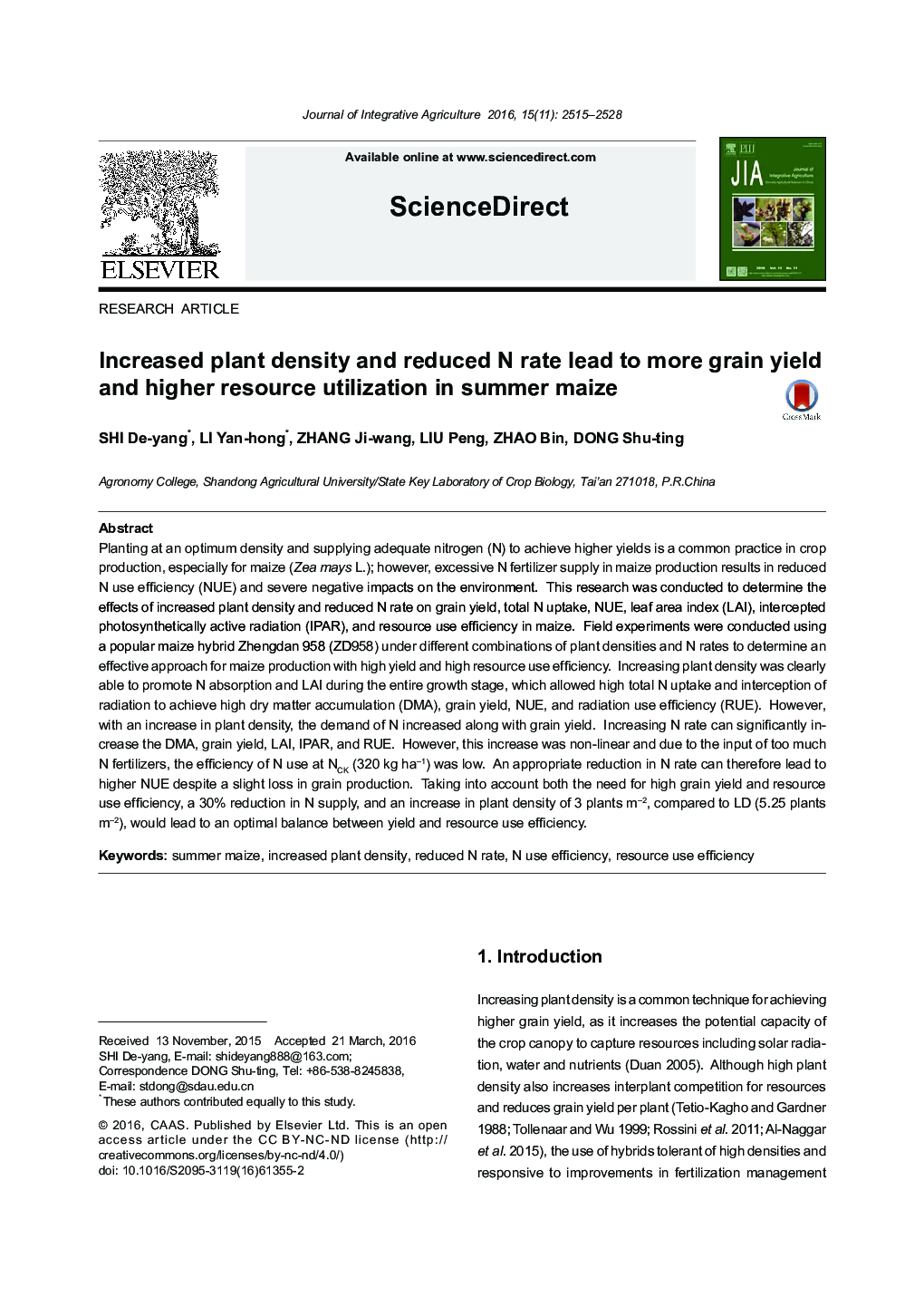| Article ID | Journal | Published Year | Pages | File Type |
|---|---|---|---|---|
| 8876207 | Journal of Integrative Agriculture | 2016 | 14 Pages |
Abstract
Planting at an optimum density and supplying adequate nitrogen (N) to achieve higher yields is a common practice in crop production, especially for maize (Zea mays L.); however, excessive N fertilizer supply in maize production results in reduced N use efficiency (NUE) and severe negative impacts on the environment. This research was conducted to determine the effects of increased plant density and reduced N rate on grain yield, total N uptake, NUE, leaf area index (LAI), intercepted photosynthetically active radiation (IPAR), and resource use efficiency in maize. Field experiments were conducted using a popular maize hybrid Zhengdan 958 (ZD958) under different combinations of plant densities and N rates to determine an effective approach for maize production with high yield and high resource use efficiency. Increasing plant density was clearly able to promote N absorption and LAI during the entire growth stage, which allowed high total N uptake and interception of radiation to achieve high dry matter accumulation (DMA), grain yield, NUE, and radiation use efficiency (RUE). However, with an increase in plant density, the demand of N increased along with grain yield. Increasing N rate can significantly increase the DMA, grain yield, LAI, IPAR, and RUE. However, this increase was non-linear and due to the input of too much N fertilizers, the efficiency of N use at NCK (320 kg haâ1) was low. An appropriate reduction in N rate can therefore lead to higher NUE despite a slight loss in grain production. Taking into account both the need for high grain yield and resource use efficiency, a 30% reduction in N supply, and an increase in plant density of 3 plants mâ2, compared to LD (5.25 plants mâ2), would lead to an optimal balance between yield and resource use efficiency.
Related Topics
Life Sciences
Agricultural and Biological Sciences
Agricultural and Biological Sciences (General)
Authors
De-yang SHI, Yan-hong LI, Ji-wang ZHANG, Peng LIU, Bin ZHAO, Shu-ting DONG,
